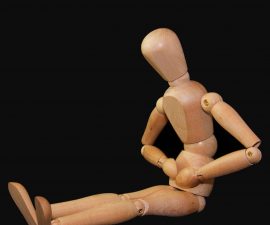Laser hair therapy is an alternative hair loss treatment with safe-low ‘therapeutic’ exposure to light (red, infrared radiation). Some studies show it is effective enough to help treat hair loss problem (both in men and women) from various reasons (e.g. hereditary hair loss, pattern baldness, and androgenetic alopecia). How much it will cost is dependent on several factors.
The quality of each provider and laser product varies. So it’s important to understand what your options before making a deal. If necessary, do your homework comprehensively to find the best one that really works!
Is low-laser hair therapy worth a try?
For many years scientists have tested the technology of laser and analyzed its effects on health. While it can hurt your vision, with appropriate settings it’s also often used to help treat a number of ailments. The same goes for hair health.
Its effect on hair varies. While it’s often used for body hair removal, it could also be effective enough to help stimulate hair growth. This effect is dependent on certain parameters (e.g. the wavelength of laser, session duration, frequency of exposure, and pulse rate).
The definitive way of how it promotes hair growth is not fully understood yet. Here are some theories:
To boost adenosine triphosphate
In appropriate settings, the laser may significantly stimulate the production of ATP (adenosine triphosphate) because the photons can act on cytochrome C oxidase. This will help provide more energy and essential metabolic process to support hair growth.
To improve blood flow and oxygenation
Blood circulation plays a role to support your hair growth, because blood distributes oxygen (O2) and nutrients required by cells of the body (including cells of your hair follicles). So, poor blood circulation is bad for your hair health.
Some studies show that bald area on the scalp is more likely to have lower blood flow and oxygen. This is where low infrared laser comes up.
With appropriate settings, laser can help increase nitric oxide. Elevated amounts of nitric oxide promote widening of blood vessels (vasodilation), improving blood flow and scalp tissue O2 levels. As a result, there will be more oxygen and essential nutrients distributed to the hair roots.
To reduce DHT
DHT, dihydrotestosterone, is an androgen hormone that plays a role to design male characteristics. While it is required for some body functions, it’s also often to blame for many cases of pattern baldness in men. In some men, excess DHT triggers hair follicles to shrink and go into telogen phase (resting), causing pattern baldness.
Laser hair loss therapy is worth a try if your hair loss problem has to do with DHT. The infrared (laser) radiation, again with appropriate settings, may help inhibit the production of 5-alpha reductase (an enzyme that coverts testosterone into dihydrotestosterone).
How much does it cost?
While it’s quite promising, it is not affordable option. But if you’re ready to spend thousands of dollars, it’s not bad idea. Hair growth improvement is quite fast, typically 12-25 weeks after therapy.
The cost of each session is from $200 to $500. And to gain maximal results, it usually requires several sessions. For 8-10 sessions, you may need to pay up to $3,000 or more!
How about personal laser hair treatment? It is more affordable than in-Office laser hair therapy. You don’t have to go to a clinic or a doctor’s office, just use a laser comb or a personal laser helmet then do your therapy more comfortable at home. But does it really work?
A laser comb may be the most affordable choice. It is offered around $200-400. But many people find it’s not effective enough to treat the problem. It’s more difficult to track the duration each part of the scalp has been exposed to the radiation. We can say there is no way to systematically determine whether or not each area of your scalp is getting adequate exposure. Furthermore, there is a vision health issue. Each time when you use the comb, it’s possible to incidentally have laser flashed into your retina. You need to become extra carefully!
So when it comes to laser hair treatment at home, it’s much better to opt for a helmet – laser combs should be your significant reservations! Though laser helmets are more expensive, they are worth a try.
Things to remember before trying your therapy
For more guidance (if you have enough budget), laser hair therapy is more recommended. Though it is costly option than laser comb and personal laser helmet, you do it under professional and physician supervision to make sure everything is safe and will make your hair growth more likely.
In appropriate way, there should be nothing to worry. Laser hair therapy rarely causes serious complications. Even it is painless and clean. But the laser may affect certain medications, especially medicine-induced photosensitivity. So if you’re taking certain medications, tell your physician!
Also, it’s still more affordable than hair transplant. Other benefits are as follows:
- No risk of scarring and infections.
- Unlike hair transplant (typically only available for men), again it can be used by men and women with hair loss problem.
- Unlike Rogaine (Minoxidil) and Propecia, there is no long time commitment required. Laser therapy for hair loss usually requires minimal time commitment, though this varies between individuals.
- So far there are no significant adverse effects reported.
What else to understand? Before dropping thousands of dollars, here is a quick rundown to remember.
Find the best practice that meets your requirement most!
Unfortunately, it’s hard to determine appropriate settings (such as wavelength, session frequency, session duration, and other parameters) that work best for your hair growth recovery. So it’s important to choose therapy providers that understand this issue most. If possible, they will custom your own laser helmets.
What else to ask?
- Ask the laser devices they have, and make sure you clearly understand pros and cons of each device you’re going to. There are a number of different types to choose from (e.g. laser diodes, LED diodes, FDA-cleared laser, cosmetic laser, etc.)
- If possible, ask them whether their laser devices really work for hair regrowth on human scalp (not mice)! To keep safe, choose laser hair-growth products with FDA approval. This is important to prove the unit has undergone clinical trials or tests that support the claims.
- Does the provider you’re going to choose have a track record of real satisfied customers?
- And, how many years they have been operating?
Replicate proven methodologies!
Unfortunately, only very few doctors or professional trained share settings that work & don’t work for their patients. So if you’re keen to choose personal hair loss treatment at home, do homework to avoid a purchase mistake.
The first step, find a study of low laser hair treatment that achieved significant result of hair regrowth (but on human, not mice). Then replicate the methodologists of the study on yourself by using the exact same laser, wavelength, session frequency, session duration, etc. If necessary, contact authors or researchers of the study! It may take some time to reply your message, but they will reply!
Another idea, find someone else who had significant experience of hair regrowth in using low laser hair treatment (especially people with the same type of your hair loss problem). Then replicate her /his methodologists!
Sometimes the underlying cause of the problem matters. Hair loss caused by lifestyle factors (e.g. nutrient deficiencies and stress) are relatively easier to treat. But hereditary hair loss problem, receding hairline of pattern baldness for example, is more difficult to treat!
Many people with hair loss problem exist in both real life and online (such as hair loss forums). Some found significant hair regrowth with laser hair treatment. Just make sure their articles /testimonials have no connection with any affiliate programs so you can get the real ones to follow.




